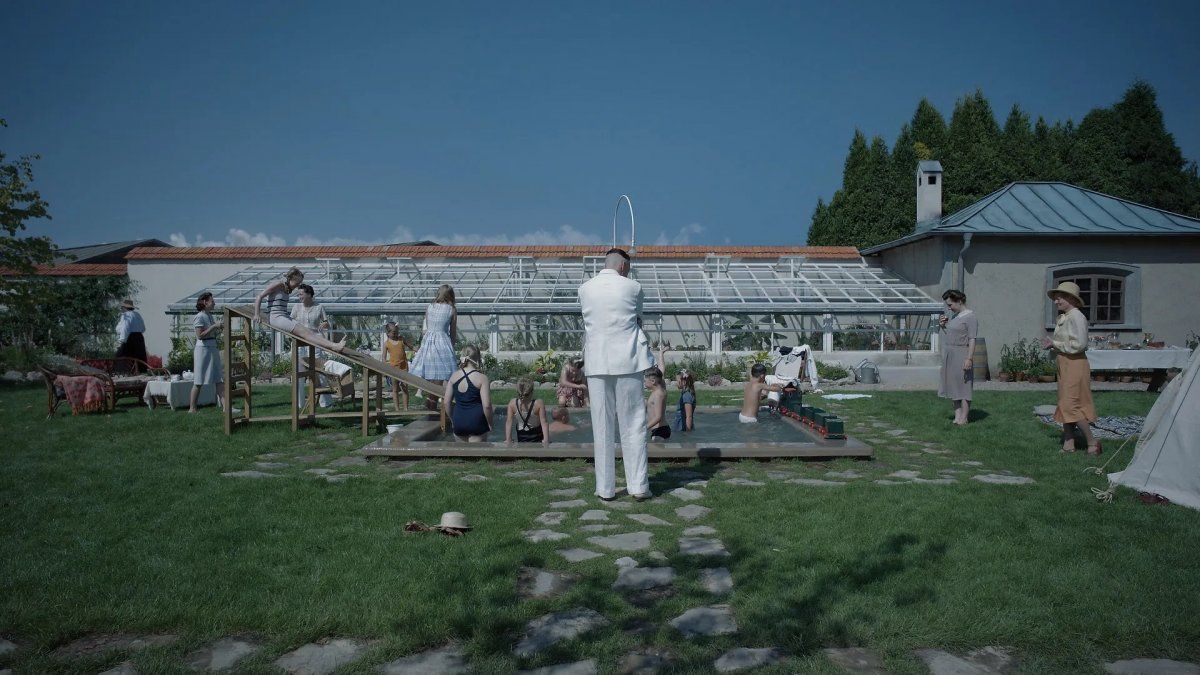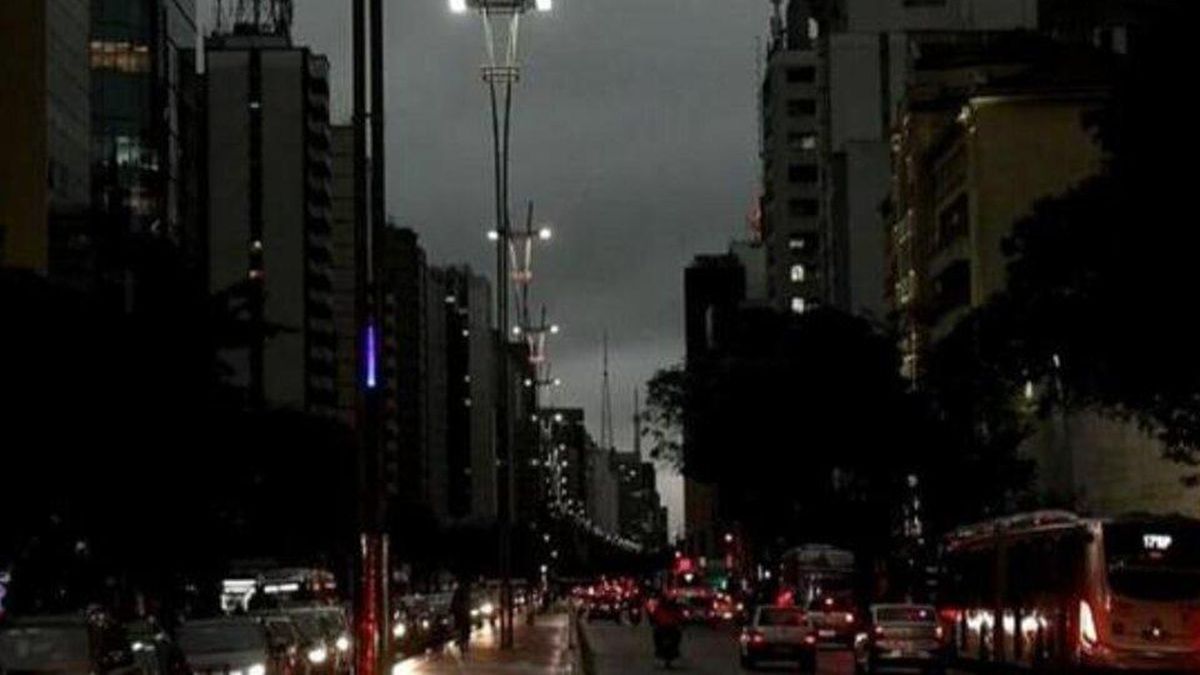In the middle of the month it will be released in Argentina “Zone of Interest”, United Kingdom, 2023, which will compete for the Oscars in both the Best International Film and Best Picture categories (in addition to also being nominated for Best Director, Jonathan Glazer; Best Adapted Screenplay and Best Sound). Beyond its values, which will be evaluated in due course, what this film once again brings to the fore, and in an exemplary way, is one of the ethical dilemmas that since the middle of the last century have compromised not only cinema but all the arts: the possibility, or not, of graphically representing the Holocaust.
“Zone of interest” is based on the novel of the same name by the English narrator Martin Amis, who unexpectedly died almost simultaneously with the premiere of the feature film, last year at the Cannes Festival. Let us point out, at the outset, that His book and the film version (there is talk of a “free” adaptation) do not have any major similarities beyond the choice of the protagonist, Obersturmbannführer Rudolf Höss. (who should not be confused, despite his almost identical pronunciation in German, with the other Nazi war criminal and Hitler’s lieutenant, Rudolf Hess) and his family, who are seen throughout much of the film in idyllic German countryside settings. Höss was the main commander, for five years, of the Auschwitz-Birkenau extermination camp, and the mastermind and executing hand of the genocide perpetrated there.
Amis, who does not even mention Höss by name (he calls him Paul Doll), develops a complex story of personal revenge of the Nazi leader, narrated in three voices; a plot against his own wife, who became involved with another comrade, and thus underlines the horror of the situation by leaving, in the background, the atrocities that were committed behind their backs. That is, stages, with edges of absurdity, a story of love and jealousy between the executors of that hell, which recalls Theodor Adorno’s famous phrase about the impossibility of writing poetry again after Auschwitz.
Glazer’s choice was different in terms of plot, although not conceptually.: In the film none of that love intrigue is present. What there is is the plainest everyday life of the Höss, a “model” family, on a calendar, with dips in the river, walks with the children through the forests and bucolic trails, but, of course, in the “zone of interest”: this expression was the euphemistic form, of brutal cynicism, with which Nazism called the enclave of Auschwitz and its surroundings; the East to which many families were encouraged to move to continue the Aryan expansion throughout Europe.
What the film does, then, is not to hide the images and, for that very reason, increase the dimension of horror through an intrapersonal intrigue, but rather that filters small scenes in which the tragedy of humanity is glimpsed in the “banal” acts, as Hannah Arendt would describe them, of everyday life.: Höss’s wife and some friends, who try on clothes whose origin is not unknown to the viewer (nor them, of course), or comments like: “I found a diamond inside a toothpaste. What ingenuity they have to hide things! Another creepy scene is when they discover, in the river, where the boys are enjoying, a piece of tooth that ended up there.
If Höss’s biggest dilemma is the move to Oranienburg and the duty to leave the “paradise” of his house, bordering the countryside, which the film allows us to see, and never shows (in the same way as the comments of the women mentioned above ) is the consummation of the Holocaust: You can see, on the horizon, the smoke from the crematoriums; the high cement walls and the neighboring fence; the infamous Achtung posters. And, in one of the best scenes, the arrival of a prisoner train without either the train or the prisoners being seen: only the profile of the commander in the foreground, little by little covered to the point of complete whiteness by the steam of the locomotive. , and as a background sound, the barking of the dogs and the cries of the condemned.
Background
The character of Höss had become famous in European literature for the novel by the Frenchman Robert Merle “La mort est mon métier” (“Death is my job”, 1962), a fictional autobiography based on the real memoirs of the protagonist, “Commander of Auschwitz”, a novel from which the film seems to borrow a scene: the planning of the massacres. Höss was not tried at Nürenberg; There he was only summoned as a witness, but he was subjected to a brief trial in Poland in 1947, and he was hanged in the Auschwitz camp itself.
Jonathan Glazer, in different interviews he offered in Cannes when the film premiered, mentioned two titles as background: the pioneering documentary “Nuit et brouillard” (“Night and Fog”, 1956), by Alain Resnais, and especially the portentous feature film “Shoah” (1985), by Claude Lanzmann, who shot 300 hours of film and took eleven years , between 1974 and 1985, to complete it. Lanzmann (1925-2018), a fundamental intellectual of the French existentialist movement, was closely linked to Jean Paul Sartre and Simone de Beauvoir, and after the death of the former he continued with the direction of the lighthouse magazine of that philosophical school, “Les Temps Modernes” .
“Shoah”, in its almost 9 hours of duration, does not show a single scene of the fields: they are testimonies of those who survived them, and of those who, in one way or another, were witnesses (a hairdresser, a train station guard who puts his hand on his neck when mentioning Treblinka, etc.). Lanzmann, with this film, maintained as a moral principle that “the Holocaust is unrepresentable” because no one can tell about it, no one can bear witness to what happened there, because that escapes the human dimension. Trying to do so would be not only “trivializing” it but trying to reduce it, in vain, to the story of a battle or any other historical event. The Holocaust transcends any event, it is unique, and therefore, according to Lanzmann, unrepresentable.
“There is no way to concoct a fiction that shows 3,000 people dying of asphyxiation, together, inside a gas chamber in Birkenau. You can’t, you shouldn’t. Witness Filip Muller tells what that was like in “Shoah” and I’m sure there is no other way to put it.he said in a report.
To Lanzmann, who visited Argentina several times (to the point that His autobiography, published in 2011, is called “The Hare of Patagonia,” since he identified with that “little animal that has flight as its weapon of survival.”), we interviewed him in 2000 when he came to the Bafici to present his film “Un vivant qui passe” (“Someone alive who passes by”), an extensive report he made to Maurice Rossel, delegate in Berlin of the International Committee of the Red Cross who He “visited” Auschwitz during the war and said, at the time, “not having seen anything strange.” He also said that he never saw the infamous “Arbeit Macht Frei” (“Work Liberates”) sign at the entrance to the camp. The film’s objective was to demonstrate his lies, his bad faith and his anti-Semitism, and it fully achieved this through several of his lapses., starting with the one used in the title. Rossel says that he saw, at one point, “a live person” passing by, clearly referring to a prisoner who had not yet been gassed. For reasons of time, he said, he did not include Rossel’s testimony in “Shoah” because he deserved a separate film.
During our conversation with Lanzmann we touched on a topic that, by then, he had calmed down somewhat, but that still made him in a bad mood.. He had detested “Schindler’s List,” and had a public controversy with Steven Spielberg (several books were published on the subject) over what he considered “obscene” representation of the Holocaust. Lanzmann He couldn’t stand the fact that the film created “Hollywood-style suspense,” for example, in the shower scene, when the viewer thinks gas will come out and water ends up coming out. “That is immoral,” he protested.. Two years later, he would differentiate Roman Polanski’s “The Pianist” because his story stops before the start of the Holocaust. Surely, Lanzmann would approve of the point of view chosen by “Zone of Interest”: the lack of any graphic recreation of the horror of the Holocaust. Not even a single prisoner is seen, although his cries can be heard sporadically in the distance, while the most brutal everyday life, including “good feelings,” flow among the families of the executioners.
And this is also in line with that expressed by another great thinker who dedicated so many pages to the subject, George Steiner, who wrote: “[El pianista Walter] Gieseking played Debussy’s complete piano music on nights when he could hear the screams of people in the sealed carriages of the Munich station on the way to nearby Dachau. Those screams could be heard in the concert hall. That is recorded. And there is no one who would say that Gieseking did not play magnificently or that his audience was not completely deeply moved. Despite the screams that everyone heard. Not only Adorno talked about poetry and Auschwitz; Walter Benjamin also maintained that at the base of every great work of art there is a lot of barbarism.”.
Source: Ambito
I am an author and journalist who has worked in the entertainment industry for over a decade. I currently work as a news editor at a major news website, and my focus is on covering the latest trends in entertainment. I also write occasional pieces for other outlets, and have authored two books about the entertainment industry.




